-
Packing Tips for Summer Day Camp
Summer camp offers kids a great way to enjoy the season while staying active, engaged, and surrounded by friends. Is your child enrolled in summer day camp in Pembroke Pines ? If so, then watch this video for tips on what to pack.
First, consider using a rolling cooler for easy traveling to and from summer camp and the car, as well as keeping your child’s snacks and lunch cool throughout the day. You may also want to pack wet wipes, a bathing suit, an extra set of clothing, a towel, bug spray, sunscreen, water, napkins, and utensils when sending your child to summer day camp.
-
The Importance of Communication-Rich Environments
Are you searching for the right preschool in Pembroke Pines and wondering what to look for in a quality program? If so, then you could benefit from learning about the importance of communication-rich environments for child development.
Providing children with a variety of experiences can be critical for the growth of their language and communication skills. For this reason, you should look for a preschool program that will help promote your child’s development by providing him with an environment that is language and communication-rich.
Your child’s preschool program should offer multiple language models over the course of the day, use developmentally appropriate language, model appropriate forms of grammar, and include daily drawing and writing activities. Additionally, your child’s preschool instructor should respond to every communication attempt made by children in the classroom, encourage families to visit the classroom, frequently read to the children, and respond to children based on their focus and intent. Selecting a program with these qualities can help promote the development of your preschooler.
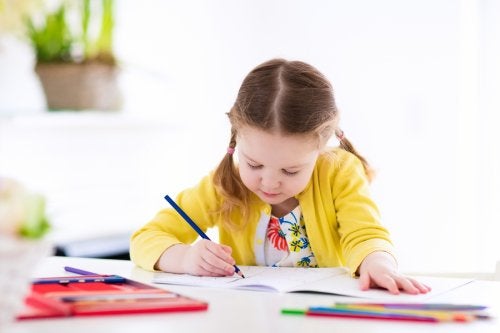
-
Choosing Educational Toys for Pre-K Kids
Toys can be a fun distraction for children, but they can also be educational and support their development. Is your child currently in pre-kindergarten in Pembroke Pines ? If so, then she is probably experimenting with her developing physical skills, asking many questions, and displaying a longer attention span. Continue reading for tips on selecting educational toys that can support your child’s education at this age.
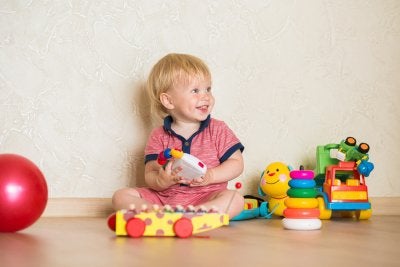
Pick Toys That Allow Her to Create
Encouraging your child’s creativity is an excellent way to help her learn and develop. For this reason, you should look for toys that give your child something to create with. Some great examples of creative materials to offer your pre-k student are colored construction paper, crayons, markers, paintbrushes, finger paint, scissors made for children, scraps of cloth, paste, playdough, and chalk.
Choose Toys That Encourage Problem-Solving
At this age, you can support your child’s education and development by providing her with toys that demand problem-solving skills. Puzzles with 12 or more pieces and collections of objects that can be sorted in various ways, such as by color, size, quantity, and shape, are great educational toys for children in pre-k. You might offer her colored blocks, different sized bowls, and everyday items from around the house for these activities.
Select Picture Books That Are More Advanced
Now is the time to make the step up from the picture books that your child loved as a preschooler. As you peruse your options, choose books for your pre-k kid that have fewer pictures and more words than she is accustomed to.
Opt for Toys That Help Your Child Play Pretend
At this stage in her development, you can help your child by providing her with toys that encourage and help her to play pretend and stimulate her imagination. Consider giving your kid child-sized furniture, play food and appliances, dolls or stuffed animals to accessorize, dress-up clothes, puppets, construction sets, and blocks for building structures.
-
How Your Preschooler Benefits from Nap Time
How much sleep a child needs and how it’s divided between daytime naps and rest at night depends on the child’s developmental stage. If your kid is of preschool age, then you may realize that this is an important time for child development. Growing properly requires plenty of sleep, making nap time an important part of her schedule whether your child is at preschool or at home. To learn about the benefits of nap time for children and why it’s so critical in a preschool setting, take a look at this infographic from Tanglewood Academy in Pembroke Pines . Please feel free to share this information with your friends and fellow parents.

-
Telling Time: Simple Ways to Reinforce Lessons at Home
Telling time is an important skill, but it is becoming increasingly challenging for children, who often have few opportunities outside of their early education center to practice. If your child is in preschool or Kindergarten in Pembroke Pines and you want to help him or her master time-telling skills, these activities will help you reinforce the lessons that they are getting at school.
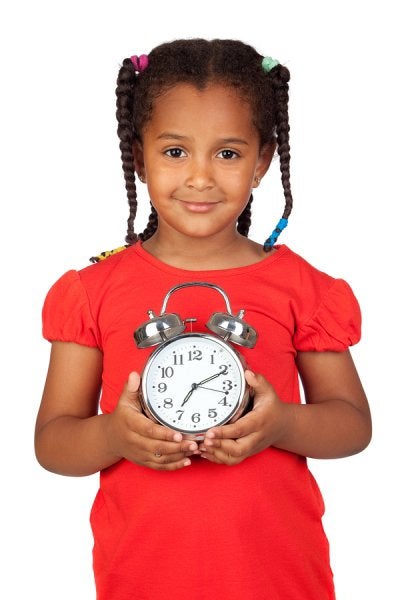
Go Analog
With digital clocks everywhere from your oven to your TV box and smartphone, kids may not understand why they need to learn time. If your house is one of the many homes that only has digital clocks, invest in a few analog clocks that your child can use to practice telling time at home. Use the clocks when you need to know what time it is, and talk your child through how you are reading the clock. Encourage your child to look at those clocks as well, and as his or her skills in telling time grow, he or she can look at the analog clock, tell the time, and then check it against the digital clocks.
Practice Skip Counting
Counting by fives is a helpful skill to have when it comes to telling time. If your child has his or her numbers mastered, start working on counting by fives. Keep practicing until your child can easily count to at least 60 by fives, and then start applying that kind of counting to telling time. This lets your child see how time is counted off in five-minute increments and can help him or her get a better understanding of reading the clock.
Use Timed Activities
Give telling time real-world applications by having your child time his or her favorite activities. For instance, you may tell him or her that you are going to leave for the park in 10 minutes, and ask your child to tell you where the hand will be on the clock. Tying time concepts to things your child is doing will incentivize him or her to keep working on time skills.
-
Essential Tips for Library Visits with Toddlers
Going to the library is a great way to get your toddler excited about reading and to support the activities he or she is doing at his or her early childhood education center in Pembroke Pines . Library visits can be a fun and positive experience for your toddler and a good way to get him or her engaged in activities that don’t involve the television or your mobile device. Make the most of every library visit with this advice.

Set the Expectations
Before you go to the library, tell your toddler how you expect him or her to behave. Through being a student at an early learning center, your child will have practice following the rules and knowing when to be quiet and when to play, so put these skills to use in the library. Practice talking in a soft voice, and tell your child that he or she can only take one book off the shelf at a time. Remind your toddler to stay with you at all times. When you go into the library with these rules in place, you can focus on enjoying your visit instead of chasing your little one around.
Get Excited About Exploring
The library is full of wonders for your child, so let him or her have fun exploring every nook and cranny. As long as he or she sticks by you, let your child wander the aisles, look at the displays, and enjoy the toys and activities in the kids’ section. Don’t limit visits to just looking at books or just sticking to one section of the building. Getting your toddler excited about the library will get him or her excited about reading for life.Check Out Books
Your toddler will love the opportunity to pick out books to read together at home. Set a limit and help him or her browse, making selections together. Involve your child in the checkout process, and then use the opportunity to teach him or her about caring for books properly. Find a space at home that is just for library books, so they don’t get mixed with your own collection.
-
Raising Empathetic Children
In addition to the academic aspects, one of the biggest benefits of early childhood education is that it gives your child the opportunity to learn and practice social skills. When your toddler is in daycare or an early learning center in Pembroke Pines , he or she will learn skills, like empathy, in interactions with other students.
Watch this video to learn more about what you can do to raise your child to be empathetic to others. Although researchers believe that some level of emotional intelligence, like empathy, is genetic, there are many ways you can foster it and teach it in your child. Talk about interactions your toddler has at his or her early learning center in which your child noticed how another child was feeling. Talk about feelings characters in books or on TV shows are having. Above all, model empathetic behavior, so that your child follows your example.
-
How Much Sleep Do Young Learners Need?
When your child starts early childhood education, you may wonder how the extra demands on his or her day will impact his or her sleep schedule. It’s important for young learners to get the right amount of sleep every day to remain happy and engaged in his or classroom in the early childhood learning center in Pembroke Pines .
Sleep needs change with ages. Most toddlers need between 11 and 14 hours of sleep per day, though some may need as little as nine and as much as 16. Preschool kids need about 10 to 13 hours, though some can thrive with as few as eight hours, while others may need 14. Pre-K and Kindergarten kids generally need 10 to 13 hours of sleep, with a minimum of eight and a maximum of 14 hours. Keep in mind that these hours can include daily naps, though early bedtimes are generally best for giving kids the full amount of rest they need.

-
The Importance of Hands-On Puzzles for Your Child’s Development
Few things are as important in early education and child development as hands-on activities. Puzzles are often used in early education classrooms as a tool to help children learn. You can bolster your child’s success in early education in Pembroke Pines by keeping hands-on puzzles available at home as well.
Hands-on puzzles provide three learning experiences for early education students. First, they get the opportunity to work on fine motor physical skills by holding the pieces and working them into different positions until they fit. Students get to practice cognitive skills as they attempt to solve the problem presented by the puzzle. Young learners also build emotional skills by working on puzzles, as they must practice patience and perseverance as they work to solve the puzzle and then are rewarded with the satisfaction of finishing the puzzle. When children solve puzzles together, they also get to practice social skills and learn to compromise and work collaboratively. Provide a variety of different puzzle types to boost your child’s learning experience.
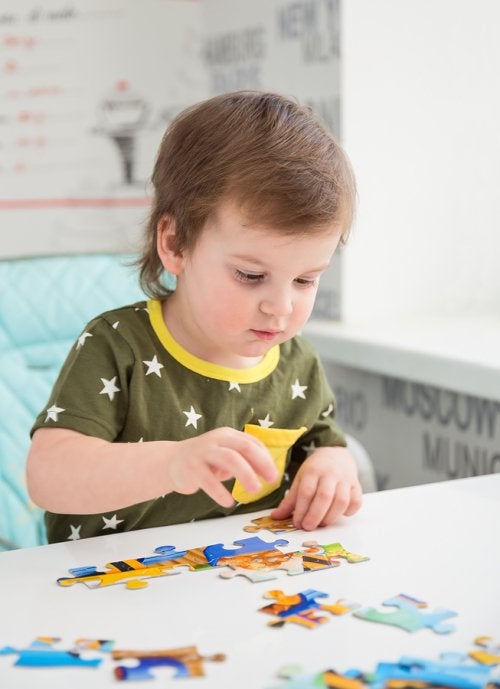
-
Easy Tips for Improving Attention Spans in Pre-K Students
Attention is a challenging issue for parents and teachers of pre-K students alike. In the pre-K classroom, working on attention spans is part of the learning process, as students become more adept at learning the differences between work time and playtime. Attention span issues can be even more challenging today, when young children are accustomed to entertainment with digital devices and constant distractions. Although the ability to be attentive naturally increases with age, there are things you can do to help your student in pre-K in Pembroke Pines . Try these tips to boost the attention span of your pre-K student.
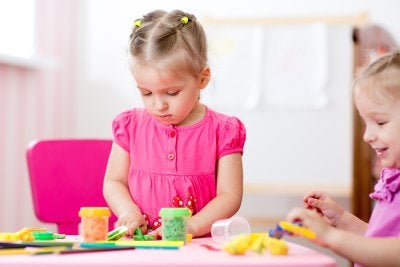
Reduce Distractions
Nearly anything can be a distraction when a young student is tackling a task he or she may not really want to do. Before your child has to concentrate on something, make sure he or she is well rested, not hungry or thirsty, and has used the bathroom. Don’t have the TV or music on, and keep digital devices tucked away. Give your child space and time to concentrate on one thing, and he or she will become more adept at tuning his or her attention to the right things.
Get Ready for the Day
If your child’s attention problems occur most often in the pre-K classroom, make sure he or she is ready for the day when you arrive at school. Avoid showing DVDs in the car, and eat breakfast at home when possible, instead of on the go. Put shoes on at home, rather than in the car. The ride to school should be a calm time when you can help your child focus on getting ready for school. Watching a DVD while frantically eating breakfast and rushing to finish getting dressed in the car will result in your child arriving at school feeling anxious and exasperated instead of ready to sit down in the classroom.
Have Realistic Expectations
As a general rule of thumb, the number of minutes your child should be able to pay attention is his or her age in years multiplied by two to five . Anything outside of that is unrealistic. Try breaking tasks up into timed chunks that fit into these windows so your child doesn’t become frustrated, which negatively impacts attention spans.
RECENT POSTS
categories
- Uncategorized
- Early Learning Center
- Pre-K
- Children
- Child Care Center
- Preschooler
- Preschool Blog Category | Tanglewood Academy
- Preschool Lunch
- Tanglewood Academy
- After-School Program
- Toddler School
- Early Childhood Education
- preschool activities
- pre-kindergarten
- childhood education
- pre-kindergarten programs
- Children’s education
- enrichment opportunities
- Kindergarten
- Nurturing Education Environment
- Toddler Care
- Child Separation Anxiety
- Toddlers
- Summer camp
- summer activities
- VPK
- Voluntary Pre-K
- Outdoor Activities
- Smart Strategies
- Tie Shoes
- Snacks
- Physical Activities
- Education
- Enrichment Activities for Kids
- Early Education Activities
- Preschool Curriculum
- Classroom Learning
- APPLE accreditation
- Language Comprehension
